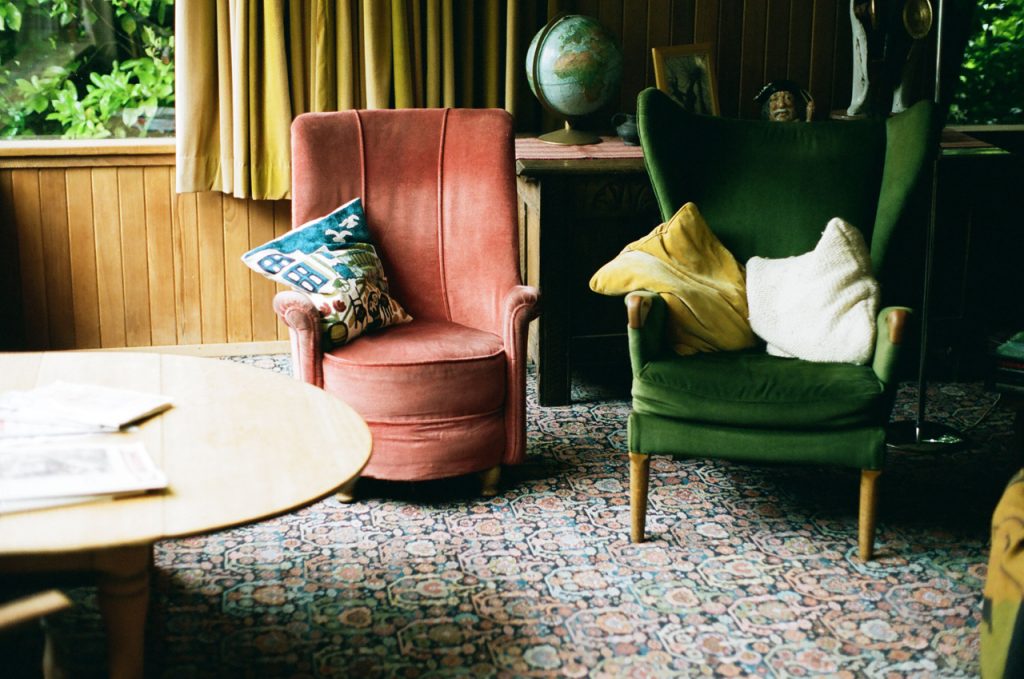
It’s arguably the best time of the year in New Orleans right now. Yes it’s spring, but in addition to blooming flowers and pleasant weather, it’s officially festival season!
French Quarter Festival will bring four days of incredible New Orleans music and food to the entire historic French Quarter neighborhood. Take a look at what you can expect and reserve April 7-10, 2016 on your calendar for French Quarter Fest fun, just a short drive from any of our New Orleans area apartment communities!

Photo by Zack Smith
French Quarter Fest spans the entire downtown neighborhood, with more than twenty music stages scattered throughout. Enjoy some of the city’s best artists with genres ranging from blues to jazz, funk, rock, brass bands, Cajun and soul.
It’s hard to say if the music or the food is better at French Quarter Fest, but luckily, attendees can enjoy both to their hearts’ content. There are a variety of food options available at French Quarter Fest, each with delectable delicacies like jambalaya, meat pies, snoballs, alligator sausage, oysters, crawfish, bread pudding, po-boys and much more.

Swing dancing lessons are part of French Quarter Festival. (Photo courtesy Flickr user Ipung_zan)
Because New Orleans always takes their festivals to the next level, it doesn’t stop at the food and music. There’s just as many other events going on as the food and the music, including the second line kick-off parade, an entire family section with kid-friendly activities, a film fest, free dance lessons and much more.
Many of our properties, especially those in Metairie and River Ridge, are just a short drive from downtown New Orleans. However, be aware that French Quarter Fest brings in a lot of traffic, so you’ll want to avoid parking in the French Quarter itself and seek parking garages in the Central Business District instead.
With its meaty texture and family-friendly size, cabbage is a versatile vegetable for weeknight meals (bonus: it stores beautifully and has a long fridge life of up to two months!).
Cabbage is a cruciferous vegetable that boasts anti-carcinogenic properties, so it’s a great food to incorporate into your diet. Whether you caught a cabbage in the St. Patrick’s Day parades or just picked one up on special at the grocery store, here are a few cabbage recipes ideal for a side dishes or entrees.
Sauteed Cabbage and Apples: A quick saute of green cabbage helps the vegetable retain its satisfying texture while also adding a touch of sweetness thanks to tart, crisp apples. Get this basic recipe from My Recipes.
Once you’ve mastered it, feel free to improvise! Try adding an egg on top for breakfast or stirring in some grainy mustard (and keep scrolling to learn how to transform this side into a main dish).
Cheesy Cabbage Casserole: Who needs mac ‘n’ cheese when there’s cheesy cabbage casserole on the table? This recipe from The Pioneer Woman is an instant comfort classic.
The green cabbage casserole pairs great with brisket or chicken, but as recipe author Ree Drummond points out, “Sometimes, this really feels like a meal in itself.”
Braised Red Cabbage: This dish from Bon Appetit can be made ahead and reheated — perfect for a busy weeknight! Pantry ingredients like vinegar and chicken broth are all you’ll need (bacon is optional).
“Unstuffed” Cabbage Rolls: Cabbage rolls are a beloved preparation of the vegetable, but they can be tricky. Get all the flavor without any of the persnickety rolling by cooking all the ingredients together in a skillet. About Food has the easy recipe.
Smoked Sausage with Cabbage and Apples: Remember the quick sauteed cabbage and apples recipe in our Sides section? Simply add in your favorite smoked sausage (we like turkey kielbasa) for an instant main dish.
Shortcut Choucroute: Chef Mark Bittman found a quick and clever way to prepare a whole cabbage with his shortcut choucroute recipe. This easy main dish requires just about 5 minutes of prep. Let the oven do the work — you’ve got better things to do!
For more recipe ideas, visit our Cooking Tips hub on the blog.
 In our busy culture, free time is often painted as a luxury rather than a necessity, but it is exactly that: a necessity.
In our busy culture, free time is often painted as a luxury rather than a necessity, but it is exactly that: a necessity.
To give your body and mind a chance to unwind, refresh, and rest, you need to take time for yourself.
Since free time is precious, here are some ways to help you make the most of the time you have and carve out more free time to yourself:
In order to create more free time for yourself and spend it wisely, you must first know where your priorities lie.
Step away from your computer and spend some quiet time by yourself with pen and paper. Imagine how you want to remember your life, looking back on it in old age. Think about what aspects of your life you want to fill those memories. Maybe it’s time spent with friends and family, or maybe it’s running marathons around the world.
Plan out your priorities and write them down. Keep a copy of this list close at all times, and when life begins to get hectic, take a step back and remember what really matters to you.
When work, friends, family, and hobbies all add up to a packed schedule, free time can be hard to come by, but actively scheduling time for yourself to spend free of obligations can help reset your mind and make you a happier person.
Sometimes that means carving out when you give yourself permission not to worry about anything else in your life. Add daily or weekly appointments to your calendar for self-care and honor this time with yourself.
During your scheduled “me time”, don’t cheat yourself. Unplug and don’t let work creep into your well-deserved time away.
Ignore emails and stop checking social media for just a little while. Try to stay away from television and the computer all together. Your brain needs a rest in order to maximize productivity when it’s time to get back to work.
Instead, go for a walk outside, read a book, meditate or throw a one-person dance party in your living room. Your future self will thank you for this time spent re-charging.
In our digital age, technology and social media can keep us from interacting in person. In addition to scheduling time in your calendar for yourself, schedule recurring dates with close friends and family as well as your spouse or partner.
Make regular plans to meet friends or family for dinner or coffee. Enjoy laughing with your favorite people. You’ll remember how much you crave and miss that connection the moment you see their faces.
Make time to do things that are authentically you. If you care about animals, volunteer at an animal shelter; if you love painting, get outside and paint something new.
Make time to do those things that make you who you are; doing this will not only remind you how much those things mean to you, they can bring a renewed energy, as well.
If you are a busy person, one of the best things you can do for yourself is take a rest. Schedule a nap or take time to lounge around and do nothing.
Our bodies, minds, and souls function best when rest is included in our lives regularly. Balance is important for achieving our best possible selves.
Our time is precious and finite, and as much as we would like, it’s not possible to say yes to everything.
Show some respect for your own time by saying “no” more often. Before saying yes to a new project or event invitation, take a moment to really evaluate if that opportunity aligns with your goals for your life.
Do you have additional tips for carving out free time for yourself? Share them with us on Facebook or Twitter.
How would you describe your apartment? Is it a little bit of everything? An Oriental rug with a leather chair, perhaps? Stark, elegant flowers on a rugged coffee table? Different eras and periods all coming together to create one happy home? If so, you probably lean toward an eclectic design style. We’re exploring exactly what is eclectic home decor. Plus, we’ve got a few tips on how to achieve it!

Photo by Laura D’Alessandro via Flickr
If your apartment has some of these characteristics (or if you’d like it to!), you probably prefer eclectic interiors.
The Furniture: Eclectic furniture tends to be a mix of pieces from different eras, like a mid-century modern sofa paired with opulent, leather club chairs, for example. Antique pieces and modern designs play together nicely in an eclectic home. However, all the mixed furniture shares a unifying feature: the same color palette. Typically, eclectic design styles favor neutral hues for furniture and brings in dazzling color through fabrics and accessories. On that note…
Fabrics and Accessories: Eclectic home decor features a wide variety of fabrics ranging from patterned, textured, trimmed, or all of the above — there’s truly room for everyone in an eclectic design scheme! Again, color palette is important. Use shades that go well together, whether you keep it in the same color family and play with textures or opt for complementary colors.
Finishes: Do you like wearing mixed metals for jewelry? If you have no qualms pairing a gold necklace with a silver bracelet, you’re probably a good candidate for embracing eclectic home decor. Because the furniture often comes from different eras in an eclectic style, so do the finishes — bronze, brass, nickel, and iron are all welcome!
The Takeaway: Eclectic home decor is all about mismatching — but there’s a method to the madness. Remember to choose a unifying color scheme to tie everything together.
Read more: Our in-depth interviews with local interior designer Whitney Jones, whose own apartment boasts an eclectic home decor style full of DIY tricks.
A homemade bowl of chili is kind of like a hug. It wraps itself around you, comforts you, and is there for you at the end of a long day. Using common pantry items and a slow-cooker technique, you can assemble this easy chili recipe in the morning. By the time you get home, it’s ready to go — simply add toppings of your choice like sour cream, thinly sliced jalapeños, crushed tortilla chips, avocado, fresh cilantro, or shredded cheddar cheese (or all of the above!).
Our favorite part about this chili is that it tastes even better after a day or two. Store it in an airtight container in the refrigerator to let the flavors marry together, then enjoy a bowl for lunch the next day, use it as a topping for chili dogs, or make late-night nachos with the leftovers.
Before you get started, take a look at some of our other ideas for weeknight cooking, like these 5 healthy ingredients or these 10-minute dinner ideas.
Brown the ground beef in a large skillet over medium-high heat, stirring often, 6 minutes or until meat crumbles and is no longer pink. Transfer browned beef to a 6-qt. slow cooker. Add chuck-eye cubes to the skillet, and saute them for 6 to 8 minutes, or until brown on all sides. Then, add the chuck-eye cubes to slow cooker. (Note: You can brown the meat the night before, sealing in an air-tight container in the refrigerator, to save time)
Add the remaining ingredients into slow cooker except the stock. Then, pour in the stock and stir. Cover and cook on high for 8 hours, or until beans are tender. (Note: Using pre-soaked or canned beans can shorten the cooking time)